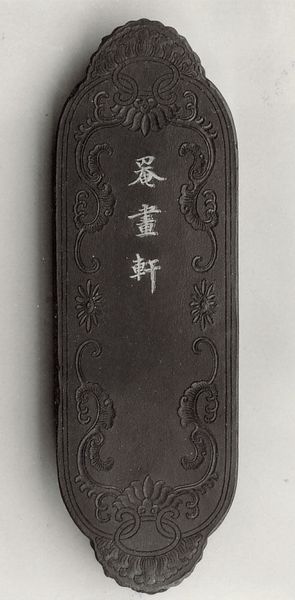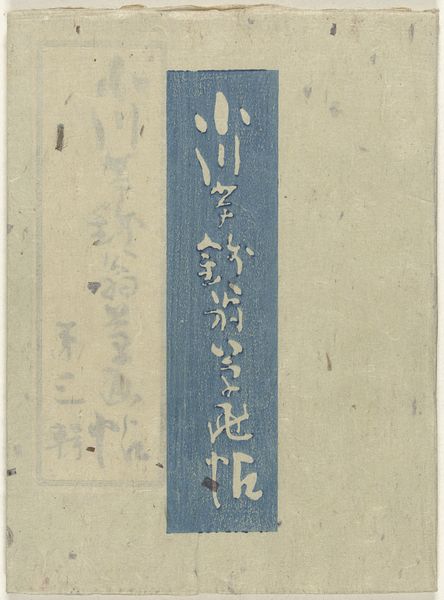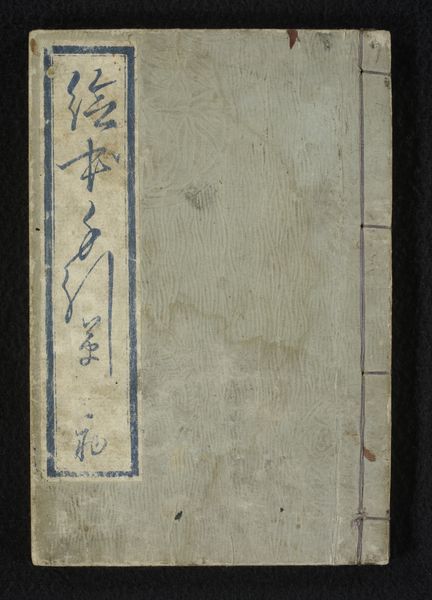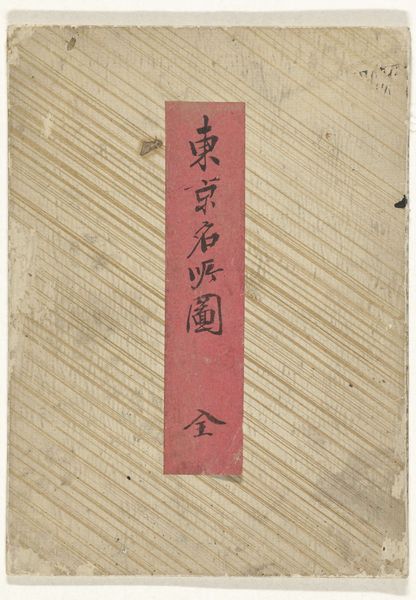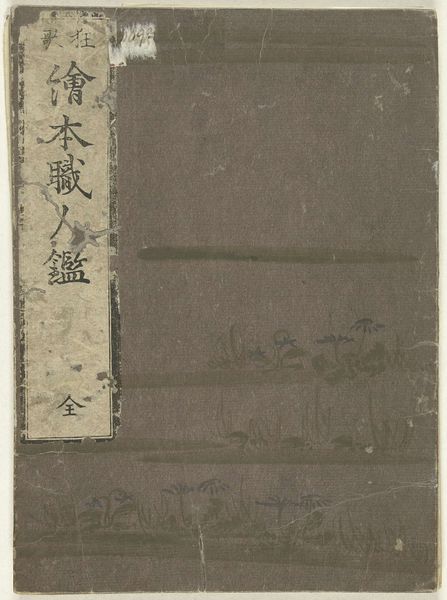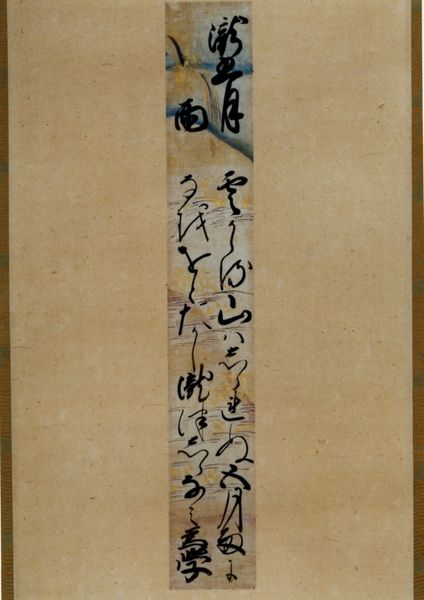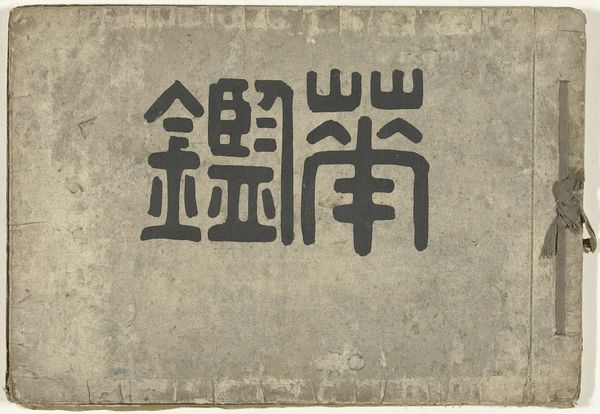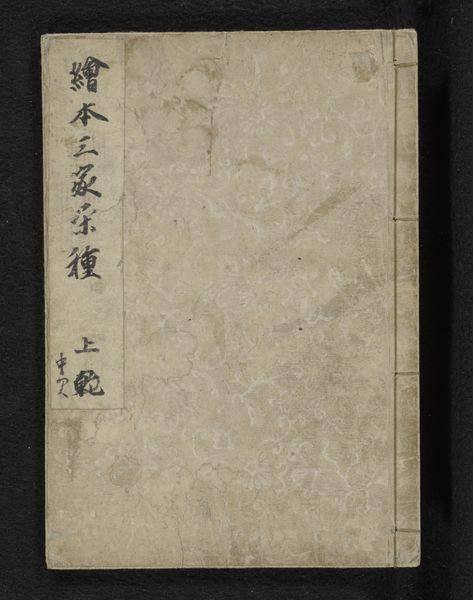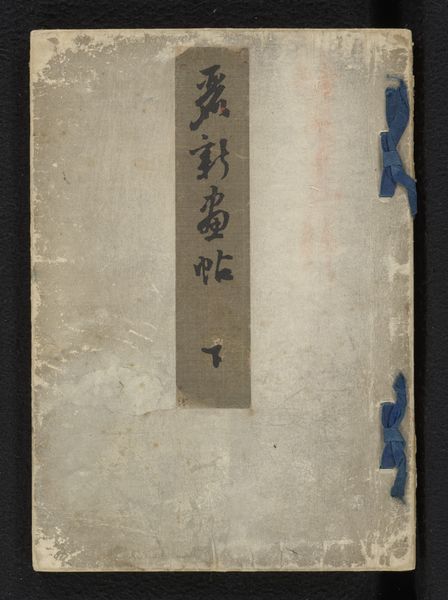
drawing, earthenware
#
drawing
#
asian-art
#
earthenware
#
china
#
calligraphy
Dimensions: 5 1/2 x 1 1/8 x 1/2 in. (13.97 x 2.86 x 1.27 cm)
Copyright: Public Domain
This red ink cake was created by Wu Lien-p’u in China as a tool for calligraphy and painting. At first glance, this object may appear simple, but its cultural significance runs deep. Ink cakes like this one were essential tools for scholars and artists, embodying values of discipline and refinement. The calligraphic inscriptions aren't just decorative, they reflect the literati culture of the time, a mark of intellectual and social status. Think of this ink cake as a window into the Ming Dynasty, a period where artistic skill was tied to social mobility and political power. The meticulous craftsmanship speaks volumes about the cultural value placed on education and artistic expression. To truly understand this piece, we delve into the historical context, examining texts and social histories. This object is a powerful reminder that art is always embedded in a web of social and institutional relations.
Comments
minneapolisinstituteofart about 2 years ago
⋮
Vermilion ink was used by the emperor for the corrections of memorials as well as by court officials and scholars for punctuation marks. This stick is cast on both sides with short poetic inscriptions. One side reads: Ten years, like (as hard as) a rock,One dot, like (as red as) lacquer.The reverse reads:Ink made by Wu Lien-p'u from Chiang-tso (north of the Yangtze River)A relief inscription on the left edge of the stick provides a date of manufacture of 1816.
Join the conversation
Join millions of artists and users on Artera today and experience the ultimate creative platform.
